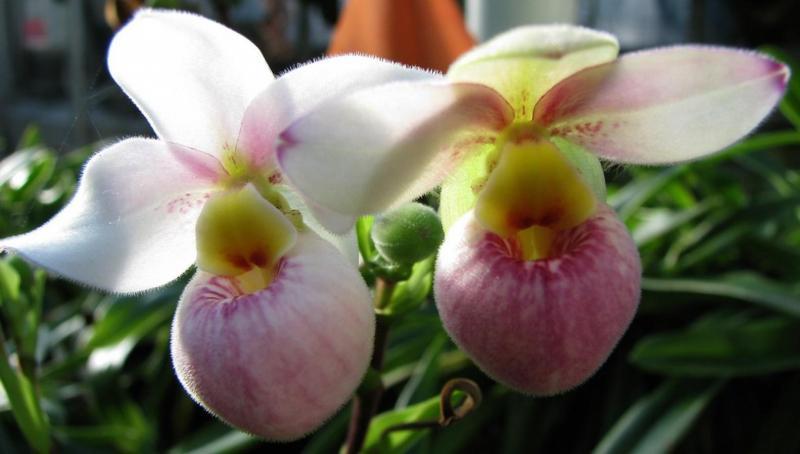Phragmipedium schlimii
Also known as: Schlimm's Phragmipedium or Phragmipedium schlimii f. albiflorum Phragmipedium manzurii Phragmipedium schlimii h.v. cardinale Phragmipedium colombianum Phragmipedium schlimii var. schlimii Phragmipedium schlimii var. manzurii Phragmipedium schlimii f. manzurii Cypripedium schlimii var. albiflorum Phragmipedium schlimii var. albiflorum in the subfamily: Cypripedioideae
Native to: Antioquia - Colombia Departamento del Huila - Colombia
General Information
Schlimm's Phragmipedium is a medium sized sympodial cool to warm growing lithophytic or terrestrial orchid belonging to the sub family Cypripedioideae native to Colombia. It is named after the Belgian Orchid Collector in the 19th century.
Plant Description
Sympodial. Grows to 30-51cm. Each new growth has numerous erect rigid, lance shaped leaves that grow to 23-33cm long
Flowers
Numerous fragrant blossoms appear
Fragrance
The orchid is fragrant.
Substrate(s)
- Coarse
Care Notes
These orchids like to be kept on the dry side, but may need to be watered daily during warm weather, and prefer a well draining mix or also do well mounted, provided they can be watered regularly.
These are quite a forgiving orchid, there are no special requirements to get this orchid to flower, just good care and consistent conditions. Larger plants may be more fussy and can react poorly to change; a poorly timed repotting, a pest infection or an unusually hot day can set them back for a couple of years. However, even plants that have been treated poorly can thrive, and if they are set back they often recover much stronger then they would otherwise be.
Fragrant:- IsFragrant
Climate
Grows at high elevations. Rainfall ranges from 64mm to 196mm per day, heaviest in May and lightest in December. Humidity ranges from 69% to 77%, highest in October and lowest in January. Temperature ranges from 14C to 29C, highest in March (16C to 29C) and lowest in June (14C to 27C).
Fertiliser
These orchids do not need to be regularly fertilised and roots may be sensitive to salt build-up, dying back and therefore impairing the plants growth or even killing it.
If fertilising, use half to quarter of the recommended amount of fertiliser. If they receive fertiliser as part of a collection, be sure to flush out the pots regularly with fresh water and monitor the roots by checking how much resistance is given by the plant when nudged in its pot or mount. If the plant becomes wobbly or loose, repot in fresh mix or rinse the media/mount thoroughly and do not fertilise for at least 3 months.
Apply fertiliser regularly at half strength year round.Potting
These plants can be sensitive to repotting though should not require repotting regularly. Repotting should be done when the mix has broken down to the point that it doesn't absorb water or holds onto water for far too long, usually the plant shows a decline in growth as well.
The mix should be free draining, with a blend of 30% inorganic ingredients such as coarse sand, gravel or perlite, mixed in with about 70% organic ingredients such as peat, leaf litter or decomposed bark. Avoid commercial potting mixes as they can vary wildly and may contain "wetting agents" that can hold onto water for loo long, causing rotting and stunted growth.
Use water retentive media such as moss to prevent roots from drying out quickly




















